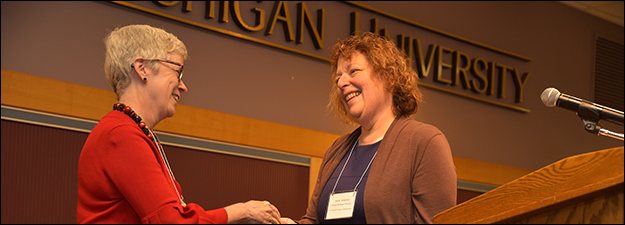Body and Soul in Medieval Visual Culture I
Sponsoring Organization(s)
Special Session
Organizer Name
Judith Soria, Jennifer Lyons
Organizer Affiliation
"Orient et Méditerranée", CNRS, Ithaca College
Presider Name
Judith Soria
Paper Title 1
Jesus and Lunatics in Early Christianity: Healing the Body and Soul
Presenter 1 Name
Bertrand Billot
Presenter 1 Affiliation
Univ. de Paris I–Panthéon-Sorbonne
Paper Title 2
In Vasis Fictilibus: Gold and Clay in San Vittore Ciel d'Oro in Milan
Presenter 2 Name
Rachel Danford
Presenter 2 Affiliation
Loyola Univ. Maryland
Paper Title 3
Depictions of Body and Soul as Mirror in the Visio Philiberti
Presenter 3 Name
Christine Kralik
Presenter 3 Affiliation
OCAD University
Start Date
14-5-2017 8:30 AM
Session Location
Fetzer 2016
Description
Medieval theologians and artists wrestled with the dual "natures" of the human form: the soul, whose indefinite substance is connected with ideas of the animate, and the body, visible and mortal. Monastic life (supposed to be essentially spiritual) was organized, according to Byzantine typika and Western monastic rules, as a way to control the passions and to master the body by regulating the most pragmatic aspects of daily life so that monks could focus on tending the soul through prayer. Medieval artists responded to this tension between the spiritual and the corporeal in various ways in the visual arts of the Greek East and the Latin West. In Genesis cycles, for example, the animation of Adam and Eve expressed this duality without picturing the soul itself, while in representations of the Dormition of the Virgin, the soul of the Mother of God was typically presented in the form of an infant or small, pale body. This session seeks papers that explore the range of ways in which medieval artists responded to the anthropological duality of body and soul in the visual arts of the Byzantine and Western medieval worlds.
Judith Soria
Body and Soul in Medieval Visual Culture I
Fetzer 2016
Medieval theologians and artists wrestled with the dual "natures" of the human form: the soul, whose indefinite substance is connected with ideas of the animate, and the body, visible and mortal. Monastic life (supposed to be essentially spiritual) was organized, according to Byzantine typika and Western monastic rules, as a way to control the passions and to master the body by regulating the most pragmatic aspects of daily life so that monks could focus on tending the soul through prayer. Medieval artists responded to this tension between the spiritual and the corporeal in various ways in the visual arts of the Greek East and the Latin West. In Genesis cycles, for example, the animation of Adam and Eve expressed this duality without picturing the soul itself, while in representations of the Dormition of the Virgin, the soul of the Mother of God was typically presented in the form of an infant or small, pale body. This session seeks papers that explore the range of ways in which medieval artists responded to the anthropological duality of body and soul in the visual arts of the Byzantine and Western medieval worlds.
Judith Soria

